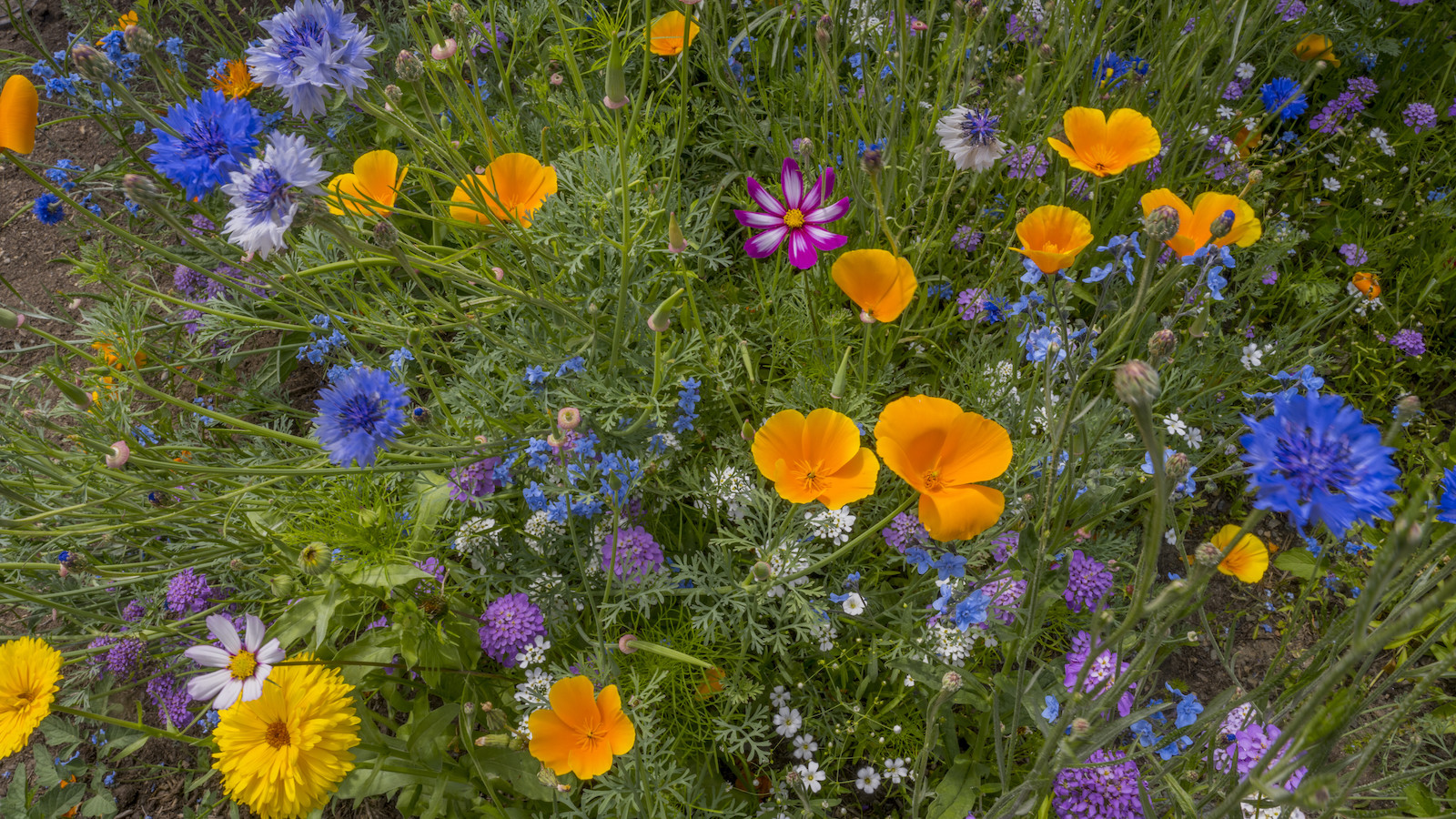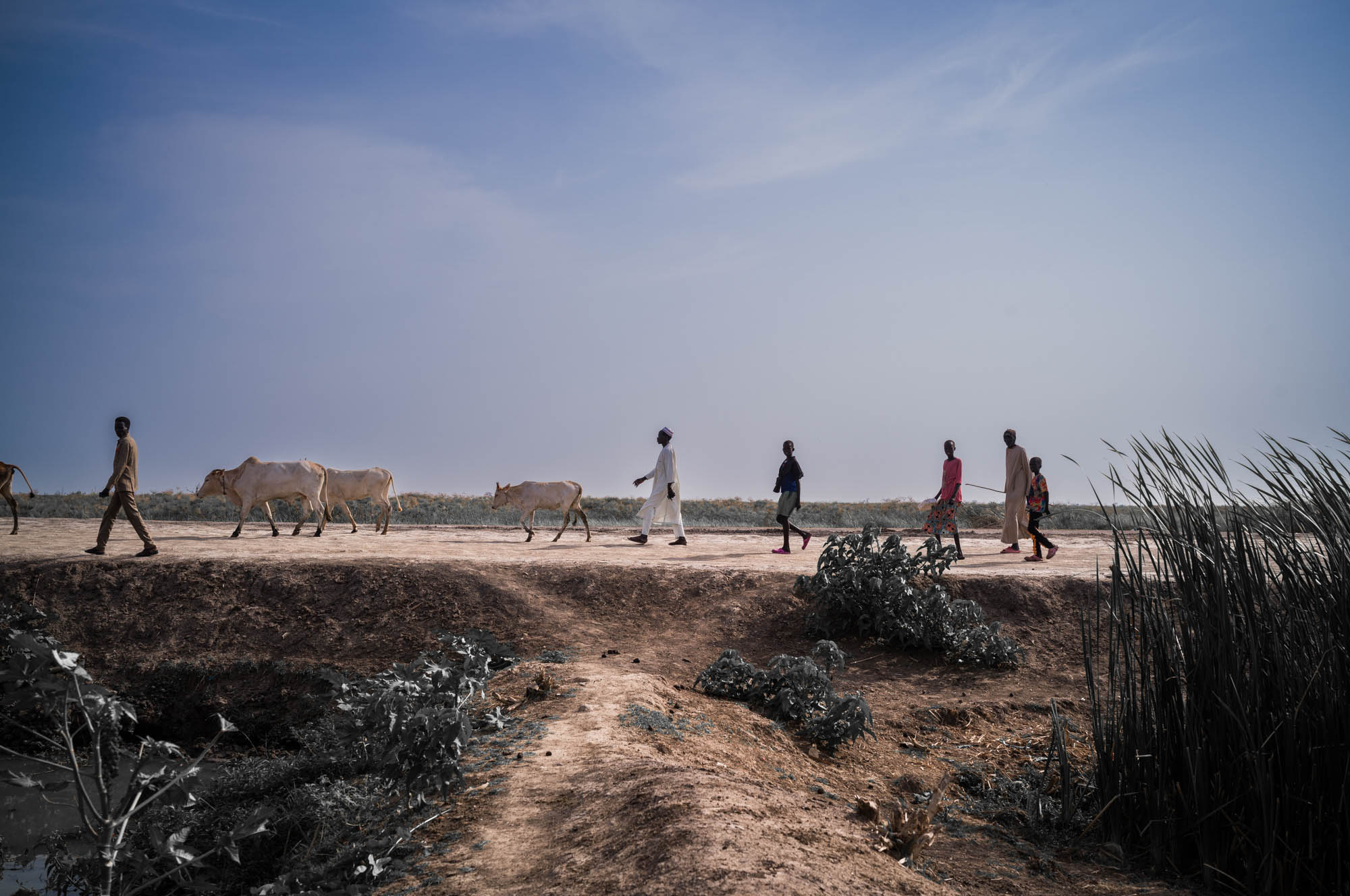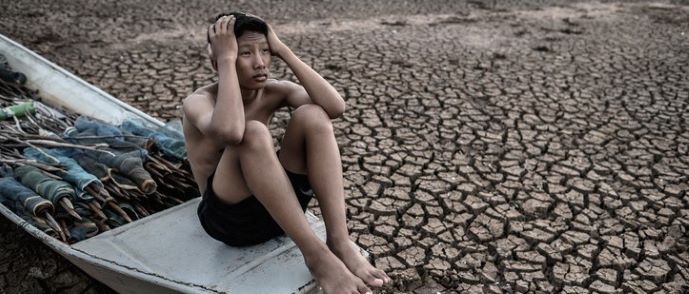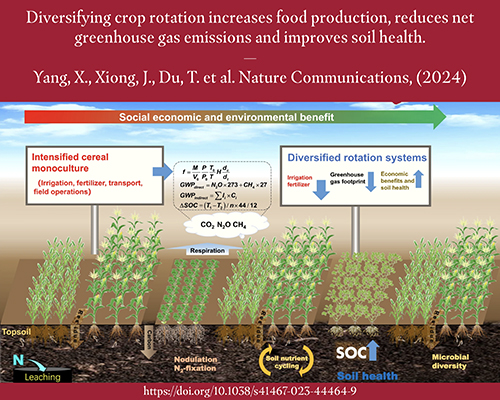Report on Climate Adaptation in UK Historic Gardens and Alignment with Sustainable Development Goals
Historic gardens across the United Kingdom are implementing strategic changes to their horticultural collections and landscape management in response to the escalating impacts of climate change. These initiatives demonstrate a significant commitment to the United Nations Sustainable Development Goals (SDGs), particularly SDG 13 (Climate Action), SDG 15 (Life on Land), and SDG 11 (Sustainable Cities and Communities).
Strategic Adaptation in Response to Climate Change (SDG 13: Climate Action)
Gardens are actively mitigating climate risks by increasing the resilience and diversity of their plant collections. This involves a shift from traditional species to those better suited for hotter, drier summers and wetter winters, directly addressing the need for climate adaptation.
Case Study: Sheffield Park and Garden
The National Trust has initiated a significant redesign at the Grade I-listed Sheffield Park, marking the first major change since 1954.
- Garden for the Future: A new garden has been planted featuring drought-resistant flora from South America, Australasia, and the Mediterranean.
- Innovative Soil Management: To combat the challenges of heavy clay soil, which cracks in summer and becomes waterlogged in winter, raised beds have been created using a free-draining mixture of recycled crushed brick, soil, and compost. This supports SDG 12 (Responsible Consumption and Production).
- Species Selection: New plantings include rare succulents, palm trees, and monkey puzzle trees, diversifying the landscape and ensuring its survival for future generations.
Case Study: The Royal Botanic Gardens, Kew
Kew Gardens is leveraging its scientific expertise to create landscapes that are both resilient and educational, contributing to SDG 13 and SDG 9 (Industry, Innovation, and Infrastructure).
- The Carbon Garden: This new installation showcases climate-resilient trees and plants, such as montpellier maples and oriental hornbeams. It visually represents rising global temperatures through a colour scheme inspired by climate stripes.
- Scientific Research: Scientific analysis, including the use of light detection and ranging (lidar) technology, has informed the selection of 35 new tree species best suited to withstand future climate conditions and maximise carbon sequestration.
- Water Management: The garden incorporates features like a dry garden and a rain garden, promoting sustainable water use in line with SDG 6 (Clean Water and Sanitation).
Enhancing Biodiversity and Terrestrial Ecosystems (SDG 15: Life on Land)
A primary objective of these garden transformations is the enhancement of biodiversity and the restoration of local ecosystems. These efforts are crucial for halting biodiversity loss and protecting vulnerable species.
The Wakehurst “American Prairie” Initiative
At Wakehurst, Kew’s wild botanic garden in Sussex, an experimental prairie landscape demonstrates a successful model for ecosystem restoration.
- Large-Scale Planting: Hundreds of thousands of wild prairie seeds from North America were sown in 2020.
- Biodiversity Success: Over 85 different species are now established, significantly boosting local biodiversity and providing a thriving habitat.
- Carbon Sequestration: The deep root systems of prairie plants, extending a metre or more underground, are highly effective at capturing and storing carbon in the soil, directly contributing to climate change mitigation.
- Pollinator Support: Many prairie species are vital for pollinators, supporting the UK’s pollinator population, a key target of SDG 15.
Future Outlook and Public Engagement
These projects underscore the evolving role of historic gardens as living laboratories and platforms for public education on climate action and sustainability.
Adapting Expectations and Practices
- Evolving Aesthetics: Garden managers anticipate that future landscapes may need to be zoned into distinct summer gardens (surviving heat) and winter gardens (withstanding wet and cold), requiring an adaptation in public expectations of year-round beauty.
- Public Inspiration: By showcasing the beauty and viability of climate-resilient plants, these gardens aim to inspire visitors to adopt similar sustainable practices in their own green spaces.
- Continuous Experimentation: Experts emphasize that historic gardens must remain progressive and experimental to learn quickly and develop effective strategies for a resilient future.
Recommended Plant Species for Drought-Resilient Gardens
The following plants have been identified by the National Trust and Kew Gardens as suitable for creating sustainable, drought-tolerant landscapes that support biodiversity.
- Parry’s agave: A flowering succulent perennial native to Mexico and Arizona.
- Beaked yucca: A tree-like shrub native to Texas and Mexico.
- Euphorbia niciciana: A semi-evergreen perennial with glaucous green leaves and lime-green flowers.
- Verbena bonariensis: A tall perennial with nectar-rich flowers that attract pollinators.
- Santolina (Cotton lavender): Features silvery, hairy leaves that reflect sunlight, enabling survival in high temperatures.
- Deciduous agapanthus: Native to South Africa, with flowers in shades of blue, violet, and white.
- Aloiampelos striatula: A South African succulent capable of storing large amounts of water.
- Eryngium (Sea holly): A spiky, drought-tolerant plant highly attractive to bees, butterflies, and ladybirds.
- Sesleria autumnalis: A hardy, long-lived grass with golden green autumn foliage.
- Salvia: Hardy and colourful varieties are highly attractive to pollinators.
- Hesperantha: Provides late-season nectar for pollinators with crimson flowers that bloom into autumn.
Analysis of Sustainable Development Goals in the Article
1. Which SDGs are addressed or connected to the issues highlighted in the article?
The article discusses issues and initiatives that are directly connected to several Sustainable Development Goals (SDGs). The primary focus on adapting to climate change, conserving biodiversity, and protecting cultural heritage links the article to the following SDGs:
- SDG 13: Climate Action: The entire premise of the article is the response of historic English gardens to the “changing climate.” It details strategies to adapt to and mitigate the impacts of climate change, such as rising temperatures and drought.
- SDG 15: Life on Land: The article emphasizes efforts to protect and enhance biodiversity. This includes planting diverse and rare species, creating new habitats like the “American prairie,” protecting pollinators, and conserving vulnerable flora through initiatives like Kew’s millennium seed bank.
- SDG 11: Sustainable Cities and Communities: The focus is on “historic gardens” and “Grade I-listed landscape,” which are significant parts of cultural and natural heritage. The efforts described are aimed at protecting and safeguarding this heritage for the future.
- SDG 6: Clean Water and Sanitation: The article addresses water-related challenges posed by climate change, such as drought and winter waterlogging. It highlights solutions like planting “drought-resistant” species and creating “dry gardens” and “rain gardens” to manage water more effectively.
2. What specific targets under those SDGs can be identified based on the article’s content?
Based on the actions and goals described in the article, several specific SDG targets can be identified:
- Target 13.1: Strengthen resilience and adaptive capacity to climate-related hazards and natural disasters.
- The article is a case study of this target in action. Gardeners are actively strengthening the resilience of their landscapes by planting “drought-resistant flowers and trees,” creating “more resilient” gardens, and developing strategies to “manage some of the impacts of climate change.”
- Target 13.3: Improve education, awareness-raising and human and institutional capacity on climate change mitigation, adaptation, impact reduction and early warning.
- The new “Carbon Garden” at Kew is explicitly designed for public education. It “invites visitors to journey” through a design illustrating rising temperatures and aims to “highlight some of the solutions.” This directly contributes to raising awareness and educating the public on climate adaptation.
- Target 15.5: Take urgent and significant action to reduce the degradation of natural habitats, halt the loss of biodiversity and, by 2020, protect and prevent the extinction of threatened species.
- The article describes planting “rare succulents, palm and monkey puzzle trees” and establishing an “American prairie” with 85 different species to boost biodiversity. The mention of Kew’s millennium seed bank and planting to “protect our pollinator population” are direct actions toward halting biodiversity loss and protecting species.
- Target 11.4: Strengthen efforts to protect and safeguard the world’s cultural and natural heritage.
- The article focuses on adapting “historic gardens” like the “historic Grade I-listed landscape at Sheffield Park.” The argument that these gardens “are a living part of our heritage and must be allowed to experiment and evolve to address the climate emergency” shows a clear effort to safeguard this heritage by ensuring its survival in a changing climate.
- Target 6.4: By 2030, substantially increase water-use efficiency across all sectors and ensure sustainable withdrawals and supply of freshwater to address water scarcity.
- The deliberate switch to “drought-resistant planting” and plants adapted to “very dry conditions” is a direct strategy to increase water-use efficiency in these gardens. The creation of “dry gardens” and “rain gardens” represents infrastructure designed to manage water resources more sustainably.
3. Are there any indicators mentioned or implied in the article that can be used to measure progress towards the identified targets?
Yes, the article mentions several specific and measurable indicators that can track progress towards the identified targets:
- Number and diversity of resilient species planted: The article provides concrete numbers, such as the “85 different species – well over 40,000 plants” that are now successfully established in the “American prairie” experiment at Wakehurst. This serves as a direct indicator for Target 15.5.
- Creation of specialized, adaptive gardens: The development of the “Garden for the Future,” the “Carbon Garden,” “dry gardens,” and “rain gardens” are tangible projects that serve as indicators of implemented adaptation strategies (Target 13.1).
- Implementation of new horticultural techniques: The use of “raised, mounded beds” with “recycled, finely crushed brick, soil and compost” to improve drainage is a specific, measurable technique for adapting to changing soil conditions (Indicator for Target 13.1).
- Carbon capture measurement: The use of “cutting-edge light detection and ranging (lidar) technology to figure out which tree species are the best at capturing and storing carbon” is a scientific indicator for climate change mitigation efforts (related to SDG 13).
- Public engagement and education initiatives: The opening of the “Carbon Garden” to visitors and the hope to “inspire visitors to plant prairie species” are indicators of progress towards Target 13.3 (awareness-raising).
- Conservation of genetic material: The mention of “Kew’s millennium seed bank” is an indicator of long-term conservation efforts to protect plant biodiversity against future threats (Target 15.5).
4. Table of SDGs, Targets, and Indicators
| SDGs | Targets | Indicators Identified in the Article |
|---|---|---|
| SDG 13: Climate Action |
13.1: Strengthen resilience and adaptive capacity to climate-related hazards.
13.3: Improve education and awareness-raising on climate change adaptation. |
– Planting of drought-resistant and resilient species (e.g., succulents, yucca, prairie plants). – Creation of adaptive garden designs (“Garden for the Future,” “Carbon Garden,” “dry garden,” “rain garden”). – Use of scientific research and lidar technology to select trees for climate resilience and carbon capture. – The “Carbon Garden” designed to illustrate rising temperatures and showcase solutions to visitors. |
| SDG 15: Life on Land | 15.5: Halt biodiversity loss and protect threatened species. |
– Introduction of new habitats (“American prairie”) leading to the establishment of 85 different species and over 40,000 plants. – Planting of species specifically to support pollinators (e.g., Verbena, Salvia, Eryngium). – Conservation of rare plants and seeds (e.g., Kew’s millennium seed bank). |
| SDG 11: Sustainable Cities and Communities | 11.4: Strengthen efforts to protect and safeguard the world’s cultural and natural heritage. |
– Implementation of new, adaptive designs in historic, Grade I-listed landscapes (e.g., Sheffield Park and Garden). – A stated policy to allow historic gardens to “experiment and evolve to address the climate emergency,” ensuring their preservation. |
| SDG 6: Clean Water and Sanitation | 6.4: Substantially increase water-use efficiency. |
– Widespread planting of “drought-resistant” plants that require less water. – Creation of “dry gardens” and “rain gardens” to manage water availability and excess. – Use of special soil mixtures in raised beds to prevent waterlogging and improve drainage. |
Source: theguardian.com







